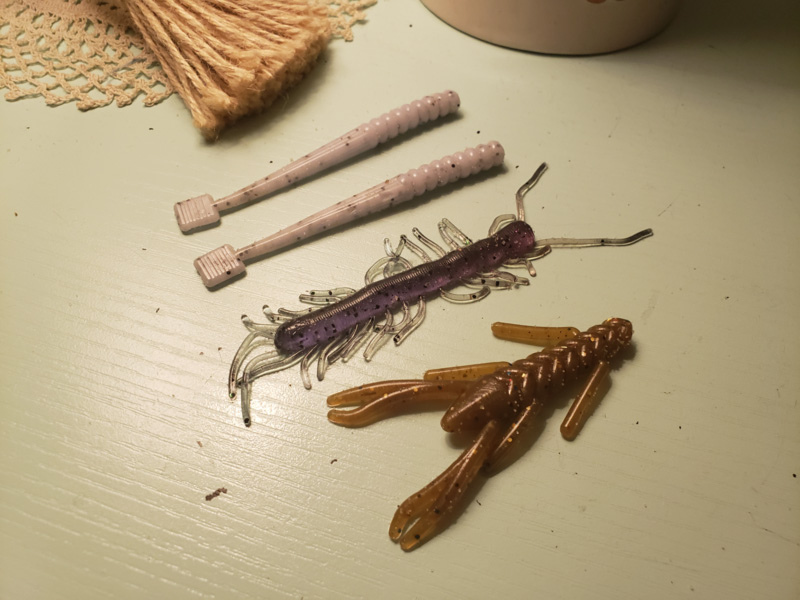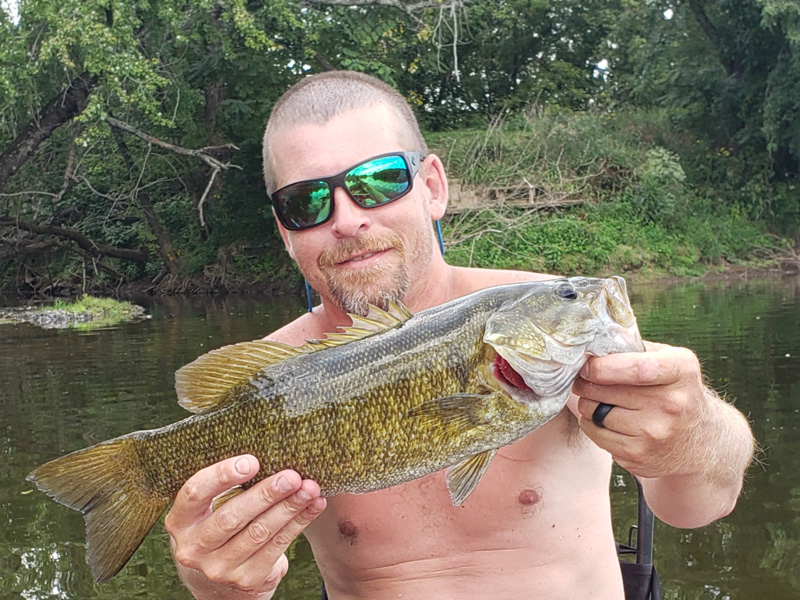Throughout the year, a few close friends and I head out to the upper James River and spend time targeting one of my favorite Virginian fish, the smallmouth bass. Pound for pound they are one of the best fighting fish in the state, especially on light tackle, and their acrobatics make for a heart-pumping show as they leap out the water — almost like they’re having as much fun as the angler on the other end of the line. The best part is that we rarely see more than a few fellow fishermen on the seven- to 10-mile floats we set off on, making for some serene back country fishing in some of the prettiest surroundings this state has to offer. Combine this with the fact that almost every square inch of smallmouth waters is public access, and you soon realize why it’s such a great experience.

Smallmouth bass or as we call them, smallies, are mostly found above the fall lines on our bigger river systems here in Virginia. The Rappahannock, James, and Potomac are all excellent places to begin your hunt. Points upstream of Fredericksburg, Richmond, and DC are all well known for having a great fishery for these prized specimens. The New River is also a stellar smallmouth fishery if you find yourself westward. They prefer and almost always stick to areas with rocky, pebble-lined bottoms. As my buddy Will says, “The river is a constant conveyor belt of food,” and these ambush predators use pockets of still water to wait for their next meal to mosey downstream. They love to congregate around structure whether it is a fallen tree along the bank or a deeper eddy behind a boulder. Anytime you see a deeper hole it’s always worth a cast or two with a fish usually as your reward.
Another place these fish tend to stack up is just after a rapid or riffle. More times than I can count, I have cruised through turbulent whitewater and fished the slack water just afterwards to catch multiple fish out of a single spot. Other places a lot of anglers overlook are shade lines, and oftentimes smallies will hide just inside of a shady area further off the bank and ambush bait from the cover.
The typical baits used for targeting these “bronzebacks” vary greatly and I think that may lend itself to the fact that they are not picky eaters most of the time. They will readily explode on a topwater tiny torpedo or popper all day long in the warmer months, but will just as easily be enticed by smaller jerkbaits or soft plastics. I prefer soft plastics and single hooks due to the amount of grass usually present either growing off the bottom or floating on the surface. The key is to remember that they have smaller mouths, so make sure to select baits with smaller profiles. For casting along the riverbank, three-inch swimbaits on a 1/16th to a 1/8th ounce jighead work really well as they have a slower more natural presentation. Paired with an erratic light jerk, pause, retrieve technique, they seem to really drive them crazy. If you are more of a finesse fisherman, slowly fishing crawfish lookalikes rigged weedless on 2/0 EWG hooks or jigs can catch some very impressive fish as well.

My rod of choice is an Okuma six-foot light-action rod to allow for long casts with lighter, more natural baits. I pair this with a 2000 series Penn Battle III reel that’s spooled in eight-pound monofilament. Together this combo will make for fun fishing on the smaller fish but also have the drag and backbone to handle the occasional five-pound beast that is lurking about. If you’re bringing along younger anglers, a cheap ultralight and a handful of Beetle Spin lures can keep them smiling all day long and reduce frustrations, due to their tendency to not get snagged as easily.
Go With the Flow
Water level and clarity can vary from day to day based on rainfall, river height, runoff, and a variety of other factors, so I tend to use lures with more disturbance on the muddier days. This is also a good reason to opt for lighter tackle in case it’s one of those gin-clear days where water clarity is extremely high.
Time of year and water temperature are also factors that have big impacts on the habits of smallmouth bass. As long hot summer days give way to cooler fall temperatures, oxygen levels rise and those docile bigger fish tend to wake up and feed move actively. Mid-September thru mid-October can be some of the best fishing of the year due to this pattern. Smallmouth will start to school up a bit more and will be working transitions between deep sections used in the winter and their summertime shallow haunts. Fish will still smash topwater baits well into October, but if a substantial cold front pushes in, consider fishing mid depth baits like flukes and other minnow-styled bait. Late October through November as the water temperature continues to drop, anglers should switch up to slower presentations and more of a sub-surface to lower water column approach.
Smallies will start to transition to deeper wintering areas so key in on deeper pockets of water more as it gets cooler and cooler. Suspending jerk baits that imitate dying baitfish are stellar at this time of year due to their ability to pause in the water column mid-retrieve. Jigs with crawfish look-alikes really shine this time of year as well. You almost cannot fish a jig too slow, so take your time and really dissect an area that looks promising and you will most likely be rewarded for your patience.
River Fishing Logistics
There are many different logistical approaches when it comes to fishing for these sweetwater smallies. Thanks to fellow hunter’s and fishermen’s dollars, the Virginia Department of Wildlife Resources (DWR) maintains a plethora of access points along pretty much any body of water you’d be looking to fish for bronzebacks. These locations can be looked up easily on their website fishing pages and most of the spots have ample opportunities to wade in and fish quite a large area, which can often be very productive.

The other approach it to leave a truck at the next ramp down and float to it from an upstream drop-in by way of kayak or canoe. This requires two vehicles but provides access to spots that very well might not see another fisherman all day long, whereas some of the wade-in landings can get crowded. As with any kind of fishing weekends are likely to have a lot more fishing pressure, so if you can slip away on a weekday, it’s definitely the way to go. Most sections of river have ample locations to get out and stretch your legs while enjoying a riverside lunch.
River Fishing Safety
Two things that must be mentioned when talking about smallmouth fishing are water levels and safety. These upper sections of the tributaries can rise and fall very rapidly due to the shear amount of land and sharp terrain that runs off to these rivers. I have fished a crystal-clear river one day to see an overnight monsoon raise the water level tremendously, and turn it to something resembling chocolate milk. During spring months and heavy rainfall, it is not uncommon to see whole trees washing down the river. It is very important to take a moment to do some online research regarding current water levels and upcoming weather for the area before planning an outing. Nothing is worse than driving a couple hours only to find out the water is unfishable.
Temperature is also a factor to mention. While cooler temps mean fishing is heating up, the rivers are not nearly as pleasant a place to take an accidental swim. Always carry a change of clothes in a dry bag if you plan to float the river in late fall in case someone does get wet, as water temps can be in the low 50s and make for a miserable or even hazardous float to the take-out point.
Smallmouth fishing here in Virginia can be some of the most scenic and action-packed fishing around, and I encourage everyone to give it a try at least once. Usually that’s all that it will take to have you coming back for more. Get out there and enjoy the excellent public fishing this beautiful state has to offer!
By Blair Hansford. Check out Blair’s YouTube channel #TheOutdoorMovement and find his Duck n Buck Lures on FaceBook.